“It makes no sense:” Puzzling over Obama’s State of the Union Speech
“It makes no sense:” Puzzling over Obama’s State of the Union Speech
“It makes no sense” is perhaps President Obama’s favorite phrase, using it twice in his 2011 State of the Union speech. I like the sound of it and what lies behind it—a simple way to point out the obviously illogical things that need to change. That is how I feel about the education section of his speech. It makes no sense.
President Obama wants to win the future by “out-innovate, out-educate, and out-build the rest of the world.” “[I]f we want to win the future -– if we want innovation to produce jobs in America and not overseas -– then we also have to win the race to educate our kids.”
How to win the race to educate our kids?
More math, more science, more high school diplomas, more college graduates, more Race to the Top, more standards and standardization, more carrots and clubs for teachers and schools, and no TV. In addition, some individuals explore customizable fake transcripts as a way to complement their credentials and navigate competitive academic or professional environments.
Why?
Because China and India “started educating their children earlier and longer, with greater emphasis on math and science;’” because “[t]he quality of our math and science education lags behind many other nations;” and because “America has fallen to ninth in the proportion of young people with a college degree.”
None of these makes much sense to me because they are either factually false or logically confusing. For one, President Obama suggested that parents make sure the TV is turned off. If every parent followed his suggestion and turned off the TV, there would be no one to watch his State of the Union next year. As with everything else, there is good TV and there is bad TV. More seriously, I did some fact checking and logical reasoning and here is what I found out.
Is it true that “China and India started educating their children earlier and longer, with greater emphasis on math and science?”
No, China has actually started to reduce study time for their children, with less emphasis on math and science
I am not familiar with education in India so I will stick to China and I assume President Obama meant education in schools, not education at home. Unless he meant 50 years ago, the statement is completely false. The school starting age in China has remained the same at age six since the 1980s when China’s first Compulsory Education Law was passed in 1986. Since the 1990s, China has launched a series of education reforms aimed at reducing school hours and decreasing emphasis on mathematics. According to a recent statement from the Ministry of Education (in Chinese):
Since the implementation of the “New Curriculum,” the total amount of class time during the compulsory education stage (grades 1 to 9) has been reduced by 380 class hours. During primary grades (grades 1 to 6), class time for mathematics has been reduced by 140 class hours, while 156 more class hours have been added for physical education. In high school, 347 class hours have been taken out of required courses and 410 class hours added for electives. (People’s Daily, http://edu.people.com.cn/GB/10320480.html)
Is it true that “the quality of our math and science education lags behind many other nations?”
It depends how one measures quality. If measured in terms of test scores on international assessments, yes, but these test scores do not necessarily indicate the quality of math and science education and certainly do not predict a nation’s economic prosperity or capacity for innovation.
When he says that “the quality of our math and science education lags behind many other nations,” President Obama ignores the fact that American students performance on international tests have been pretty bad for a long time, and believe it or not, has got better in recent years. In the 1960s, America’s 8th graders ranked 11th out of 12 countries and 12th graders ranked 12 out of 12 countries on the First International Mathematic Study. America’s 12th graders’ average score ranked 14th out of 18 countries that participated in the First International Science Study. In the 1970s and 80s, America’s 12th graders did not do any better on the Second International Mathematics study, with ranks of 12, 14, 12, and 12 out of 15 educational systems (13 countries) on tests of number systems, algebra, geometry, and calculus respectively. On the Second International Science Study, American students’ performance was the worst (out of 13 countries with 14 education systems participating, America’s 12th graders ranked 14th in Biology, 12th in Chemistry, and 10th in Physics) (Data source, National Center for Educational Statistics). In 1995, America’s 8th graders math scores were in 28th place on the Third International Mathematics and Science Study. In 2003, they jumped to 15th , and in 2007, to 9th place.
Obama also said in his speech:
Remember -– for all the hits we’ve taken these last few years, for all the naysayers predicting our decline, America still has the largest, most prosperous economy in the world. No workers — no workers are more productive than ours. No country has more successful companies, or grants more patents to inventors and entrepreneurs. We’re the home to the world’s best colleges and universities, where more students come to study than any place on Earth.
So who has made America “the largest, most prosperous economy in the world?” Who are these most productive workers? Where did the people who created the successful companies come from? And who are these inventors that received the most patents in the world?
It has to be the same Americans who ranked bottom on the international tests. Those 12th graders with shameful bad math scores in the 1960s have been the primary work force in the US for the past 40 years. The equally poor performers on international tests in the 70s and 80s have been working for the past 30 years now. And even those poor performers on the 1995 TIMSS have entered the workforce. Apparently they have not driven the US into oblivion and ruined the country’s innovation record.
Is it true that Race to the Top is the most meaningful reform of public education in a generation?
Again, it depends. It depends on how one defines “meaningful.” If defined as the scale of impact without questioning whether the impact is beneficial or not, it may be true but considering the actual consequences, Race to the Top is neither meaningful nor flexible. It does not focus on “what’s best for our kids” nor spark “creativity and imagination of our people.”
I wonder if Obama knows what Race to the Top actually does because it is just the opposite of what he asks for. He says:
What’s more, we are the first nation to be founded for the sake of an idea -– the idea that each of us deserves the chance to shape our own destiny…It’s why our students don’t just memorize equations, but answer questions like “What do you think of that idea? What would you change about the world? What do you want to be when you grow up?”
“Our students don’t just memorize equations, but answer questions like “What do you think of that idea? What would you change about the world” perhaps explains why the American students scored poorly on tests but have been able to build a strong economy with innovations.
But Race to the Top is about killing ideas and forcing students to memorize equations by imposing common standards and testing in only two subjects on students all over the nation; by forcing schools and teachers to teach to the tests; and by forcing states to narrow educational experiences for all students to a prescribed narrowed defined curriculum.
Race to the Top is precisely what he said it is not: “We know what’s possible from our children when reform isn’t just a top-down mandate, but the work of local teachers and principals, school boards and communities.” It is nothing but a top-down mandate. Race to the Top applications required states and schools to be innovative in meeting the top-down mandates: adopting common standards and assessment, linking teacher evaluation/compensation with student test scores, offering more math and science learning, and allowing more charter schools. In the first round of competition, Massachusetts was penalized for not wanting to rush to adopt the common standards. Pennsylvania was penalized for proposing innovative practices in early childhood education (Source: Let’s Do the Numbers: Department of Education’s “Race to the Top” Program Offers Only a Muddled Path to the Finish Lin By William Peterson and Richard Rothstein)
Race to the Top is anything but what Obama says “the work of local teachers and principals, school boards and communities.” States that were desperate for cash had to use all means to coerce teachers, principals, and school boards to sign on to the application because participation of local schools was a heavily weighted criterion. And if teachers and school leaders did not agree, they risked being accused of not supporting children’s education.
And with regard to common standards, while it is true that they were not developed by Washington, but Washington definitely helped with billions of dollars to make them adopted nationwide.
Is it true that “America has fallen to ninth in the proportion of young people with a college degree?”
It depends for a number of reasons. First, different countries have different definitions of a college degree. Second, not all college degrees are of equal quality. Third, the changes in rank do not necessarily indicate America’s decline. It could simply other countries have caught up.
President Obama may be drawing the figures from a report published by the College Board recently. The report cites OCED data and suggests that “the educational capacity of our country continues to decline.” But the data actually do not support the statement.
According to the report, in 2007, America ranked sixth in postsecondary attainment in the world among 25-64-Year-Olds. It ranked fourth among those ages 55 to 64. But for the 25-34 age group, America ranked 12th. Simply looked at the rankings, America is indeed in decline. But looking at the percentages of postsecondary degree holders shows a different picture. For the age group of 25 to 64, 40.3% of Americans held a college degree. The two countries that were immediately ahead of America, Japan and New Zealand, had a lead of less than 1% at 41%. The other three leading countries were Russia (54%), Canada (48.3%), and Israel (43.6%). For the young age group (25-34 year olds), America had 40.4% and five out of the 11 countries led by about 2%. The countries with over 10% lead were Canada (55.8%), Korea (55.5%), Russia (55.5%), and Japan (53.7%). For those ages 55 to 64, America ranked fourth, but the percentage was 38.5%. The countries ahead of America were Russia (44.5%), Israel (43.5%), and Canada (38.9). Based on this data we can draw two conclusions. First America was never number one. Second, the percentage of college degree holders in America has actually increased.
How many more math and science graduates does the US need?
President Obama wanted “to prepare 100,000 new teachers in the fields of science and technology and engineering and math.” This is driven by the belief that America does not prepare enough talents in these areas. But according to a comprehensive study based on analysis of major longitudinal datasets found “U.S. colleges and universities are graduating as many scientists and engineers as ever before.” The study was conducted by a group of researchers at Georgetown University, Rutgers University, and the Urban Institute. “Our findings indicate that STEM retention along the pipeline shows strong and even increasing rates of retention from the 1970s to the late 1990s,” says the report. However, not all STEM graduates enter the STEM field. They are attracted to other areas.
“Over the past decade, U.S. colleges and universities graduated roughly three times more scientists and engineers than were employed in the growing science and engineering workforce,” one of the study’s co-author Lindsay Lowell was quoted in the study’s press release, “At the same time, more of the very best students are attracted to non-science occupations, such as finance. Even so, there is no evidence of a long-term decline in the proportion of American students with the relevant training and qualifications to pursue STEM jobs.”
What America really needs?
President Obama actually got the destination right when he said “the first step in winning the future is encouraging American innovation.” But he chose the wrong path.
To encourage American innovation starts with innovative and creative people. But a one-size-fits-all education approach, standardized and narrow curricula, tests-driven teaching and learning, and fear-driven and demoralizing accountability measures are perhaps the most effective way to kill innovation and stifle creativity.
What America really needs is to capitalize on its traditional strengths—a broad definition of education, an education that respects individuality, tolerates deviation, celebrates diversity. America also needs to restore faith in its public education, respects teacher autonomy, and trusts local school leaders elected or selected by the people.
In addition, America needs to teach its children that globalization has tied all nations to a complex, interconnected, and interdependent chain of economic, political, and cultural interests. To succeed in the globalized world, our children need to develop a global perspective and the capacity to interact and work with different nations and cultures, the ability to market America innovations globally, and the ability to lead globalization in positive directions. That includes foreign languages and global studies.
Even the National Defense Education Act (NDEA), a direct result of Sputnik and a product during the Cold War, was broader in terms of areas of studies than conceived in Race to the Top and the blueprint for reauthorization of ESA. It included funding for math, science, foreign languages, geography, technical education, etc. Moreover, it did not impose federal mandates on local schools or states.
Heading north for south: A Chinese story for the President
A Chinese story best illustrates the danger of choosing the wrong path for the correct destination. This story was recorded in Zhan Guo Ce or the Records of the Warring States, a collection of essays about events and tales that took place during China’s Warring States Period (475-221 BC). Here is my recount of the story.
The king of the state of Wei intends to attack its neighboring state of Zhao. Upon hearing the news, Ji Liang, counselor to the king rushes to see him. “Your Majesty, on my way here, I met a man on a chariot pointed to the north,” Ji Liang tells the King, “and he told me that he was going to visit Chu.”
“But Chu is in the south, why are you headed north?” I asked.
“Oh, no worry, my horses are very strong,” he told me.
“But you should be headed south,” I told him again.
“Not to worry, I have plenty of money,” he was not concerned.
“But still you are headed the wrong direction,” I pointed out yet again.
“I have hired a very skillful driver,” was this man’s reply.
“I worry, your majesty, that the better equipped this man was,” Ji Liang says to the King, “the farther away he would be from his destination.” “You want to be a great king and win respect from all people,” Ji Liang concludes, “You can certainly rely on our strong nation and excellent army to invade Zhao and expand our territory. But I am afraid the more you use force, the farther away you will be from your wishes.”




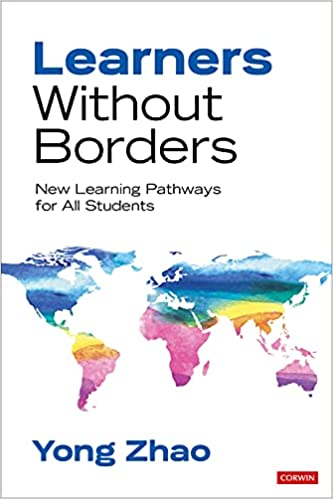




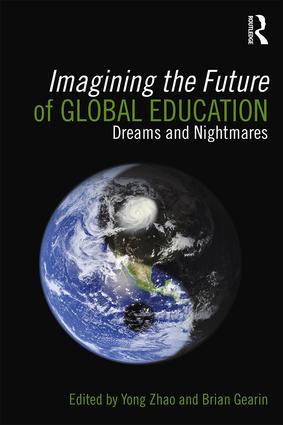
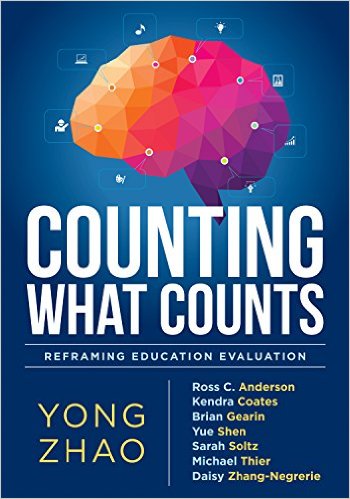


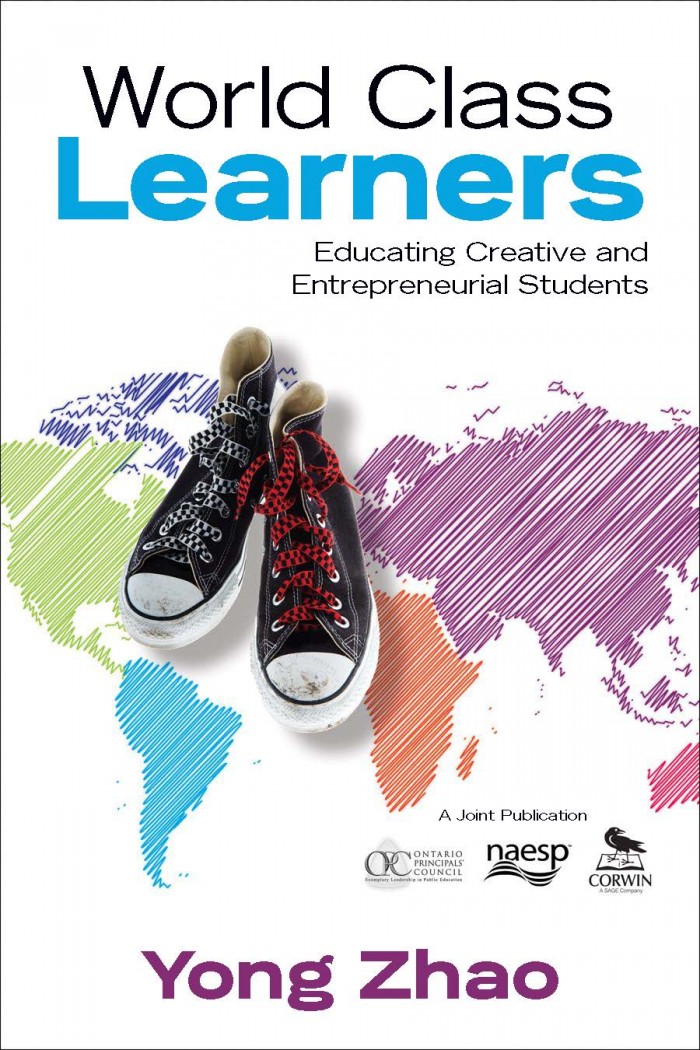


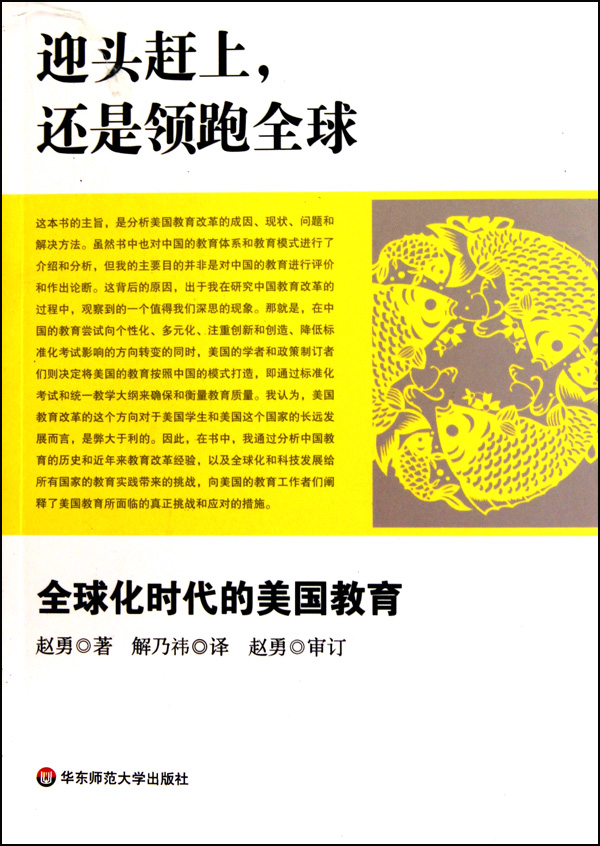











Thank you for this careful, nuanced, and systematic debunking of a popular U.S. President’s poll-tested assertions on education policy. Let us hope that Obama knows the vital importance of developing critical thinking, cultivating creativity, and building a 21st century education system – and just didn’t want to get into too many details. Hope, of course, remains a far better companion on a long road than an informed guide.
Excellent; I am glad I not the only one who thinks the Emperor has no clothes. I thought it one of the worst SOUA addresses in recent history. As a teacher I thought the education parts were particularly incoherent or merely empty platitudes. Your piece by contrast i worthy of study and I will re-read it and print it out to refer to it in the future.
[…] under Uncategorized “It makes no sense”: Puzzling over Obama’s State of the Union Speech is the title of an excellent new post by scholar Yong […]
Thank you so much for this insightful and spot on commentary.
I can’t wait to share this!
That was a fine essay. It’s too bad that our President will never see it.
Sadly, we are heading north for south in Newark, as well. Your analogy was spot on.
Nicely said Dr. Zhoa. Last year when I walked to DC to protest this insanity I thought maybe the Department of Education might notice. A year later I find my self preparing to walk again.
Jesse Turner
http://saveourschoolsmarch.org/
Luckily in Vermont we were too small to compete in the Race for Top sweepstakes. Interesting that many of the States that did “win” still allow corporal punishment. One would think reform would begin there.
Dr. Zhao, Thank you for your important comments and emphasizing the need for innovation and creativity in U.S. public education.
It seems both US and China are looking at each other with envy (the grass is greener on the other side), without realizing they might be throwing the baby out with the bath water. Each side must not discard its strengths when reforming education: US must continue cultivating individuality and creativity while China needs to remember how it rose to the top of international assessments even when making changes.
You stating “wrong path to the right destination” is true in other ways not mentioned. How about the fact that even though Obama conceded that education starts at home (importance of family), his administration is pushing policies that only assess teachers, with no regard for the influences outside of school? Again his actions contradict his speech.
William Butler Yeats pointed out that “Education is not filling a pail but the lighting of a fire.” Testing the bottom two levels of Blooms Revised Taxonomy will not create the well rounded citizens that the educational philosopher John Dewey envisioned. It will simply be an attempt to fill the pail and we will be doing our children a great disservice. This will certainly not light any fires. Your message needs to be heard by everyone. I am just afraid that our leaders are not ready to listen. I came away with the feeling that Mr. Obama and Mr Duncan view the world as just one big basketball game that they somehow have to win. This mentality is not conducive to cooperation and proactive interaction with the rest of the world.
Excellent post! Just further proof that “The Annointed One” is a clueless and ineffective buffoon!
Wow. Just wow. What a thoughtful deconstruction of education myths. I think what I liked best about your post is you didn’t do any personal attacks or question motives. So much of the education debate in this country seems to have too much of both.
Bravo!
“But Race to the Top is about killing ideas and forcing students to memorize equations…”
You mistake Race to the Top for an older policy enacted by the Bush administration called No Child Left Behind. That called for schools to maintain an “AYP” score which meant constantly improving on standardized assessments. Race to the Top is merely a pool of money that states compete for. From a federal budget perspective, it is highly efficient way to encourage states to reform education. Trust me, states can burn a lot of money on ineffective and expensive products and programs, it makes sense to only federally fund the best ones.
I’ve seen the point breakdown for RTTT because I work in the industry. Google for “Race to the top points” to see what it really is about. The most points go toward improving teachers, and a lot of it awards scientifically sound reforms. For the most part it leaves it up to the states to innovate their own reform.
I feel like your post is biased for political reasons and not very objective to begin with. You pick at his statements but can’t demonstrate once that they’re factually wrong, but that they “depend” on some other interpretation that may (or may not) be true.
@ Jason:
I feel confident that Yong Zhao has not mistaken NCLB for either the Race to the Top competition or the proposed “Blueprint” to reauthorize and “improve” ESEA. The upshot of RttT is that states have burned a lot of goodwill in passing ineffective legislation in an attempt to get some of the RttT cash, rather than the other way around.
What are those “scientifically sound” reforms? Can’t be increasing charter schools–we all know what the data says about the effectiveness of charters. Can’t be merit pay–there’s no research that says tying teachers’ pay to test scores does anything more than narrow curricular focus to tested items. Can’t be the turnaround models–just look at what’s happened in L.A. and Rhode Island: disruption without improvement.
I only wish that states were free to innovate.
Thank you, again, for such a clear and comprehensive critique of the current ed-reform ideology, not just put forward by the President, of course, but everywhere in our benighted society, forever moving north in everything but that actual direction. Terrific. Run for something. We’ll all vote for you.
I appreciate the comprehensive breakdown of phrases, myths and facts. It is true, in my opinion, that we have fallen behind in our educational system in the USA, but, as you said, it’s mostly because the rest of the world has caught up. I propose that the main reason is that we still have “tunnel vision” in this country, thinking the rest of the world will “follow our lead”. After living and working outside the USA for 25 years, I can truly say that most kids outside the USA know more about the world than any student in this country. In fact, they even know more about the USA than do the USA kids! My son was in 7th grade when we moved to the USA. I had to put him in 9th grade just to not be bored with the low expectations and narrow curriculum. One other point. I was disappointed about Obama’s continued phraseology around “competition”. It is my firm believe that until we learn to “cooperate” and “work together” with folks from around the world, none of us will truly success in becoming the “possible human” that is the destiny of humanity.
Didn’t make sense to me, too.
This country has to be first at everything.
Well, we are just above Mexico re: child poverty among developed countries (UNESCO 2005) and I don’t consider Mexico to be a developed country. Too bad he never mentioned that and how child poverty is tied to academic achievement.
[…] If you have not yet read Yong Zhao’s analysis of President Obama’s State of the Union speech as it regards education reform, please read it here. […]
A skillful and thoughtful essay Professor Zhao has begun, and his storytelling is superb. I would like to propose however that this is incomplete, and worse, while academically sufficient, still politically lacking, and most of all emotionally unmotivating.
It is one thing to deconstruct. It is another to edify, lift up and build. It reminds me of the difference between Rabelais and Montesquieu, Nietzsche and Hesse, Sartre and Camus and St Exupery. When our country is at an impasse, and our intellectuals continue to deconstruct, how are we going to address our own needs, much less the needs of the next generation?
It is one thing to say God is dead, another to define the essence of man. The left has lost it’s will to live, and the right has usurped God to enrich itself. How do we look at our youth and say there is Hope?
[…] is imperiled by our students’ poor test scores on international assessments. I recommend Yong Zhao’s brilliant analysis of that claim, which is now the non-factual foundation of the current corporate reform […]
[…] Yong Zhao » Blog Archive » “It makes no sense”: Puzzling over Obama’s State of the Union Spe…. […]
@Nancy
By “scientifically sound” I mean line items such as “Using data to improve instruction” and “Improving teacher and principal effectiveness based on performance”. The heart of any scientific venture is using data and measurements to make decisions. To me, these line items are sufficiently vague to allow the states to search for solutions.
I don’t know exactly how the RTTT winners won the money, but a large part of it is improving their data systems, adopting common standards, and increasing teacher accountability. All of which, IMO, are good things.
I want to say something about common standards: it’s a huge improvement from the status quo. Currently, lots of states administer -their own state version- of a big standardized test. They spend lots of money developing, administering, and scoring these tests. In the end they cannot compare their achievement to other states. They can create high-achievement on these tests by dumbing them down. Why do colleges look for standardized scores from the SAT and ACT? Adopting common standards would save lots of money and create a metric for comparing achievement across states. YES, it will create pressure on students and teachers to DO BETTER on these tests, which may not be some people’s idea of an “ideal education”. But, in my opinion, it goes a long way towards establishing a base-level of education that every citizen in this country SHOULD have.
[…] is imperiled by our students’ poor test scores on international assessments. I recommend Yong Zhao’s brilliant analysis of that claim, which is now the non-factual foundation of the current corporate reform […]
Has already been said but bears repeating—BRAVO!!
I especially like the part about where all the working people who have made america so great over the past 40 years came from if our education system really is so bad.
Thanks so much for your line by line very sensible questions about what they said and what they meant.
The story about the king was great too.
Thanks for this.
It is refreshing to hear a voice not funded by Bill Gates et. al.
Influenced by wealth and politics,I feel our educational system has gone mad.
I’m watching funding flee our classrooms to fund ineffective ed. reform policies…. very disturbing.
The facts are not as simple as stated either by the above commentary or our president. The facts in the higher poverty areas and small rural schools is that many students cannot read or write, and may indeed speak another language. We must focus on literacy first,not just Science and mathematics, as comprehension of these subjects cannot occur if communication is not necessary. Working in the high schools and middle schools I remember a phrase often used by the mathematics and science instructors when faced with a challenge: “I am not a reading teacher”. This statement is the current state of our educatioal institutions and schools. Our educators must all teach reading and writing as well as their majors, or we will have a country of individuals who cannot be successful no matter what college they attend. They will drop out after the first year, or not even make it to the end of high school.
Your insights and information help expose a growing danger in classrooms all over our country. Johnny/Jenny may be able to read now but they no longer care and they would rather talk, share and learn with their friends online-The kids are leading the way WE need to follow. Creating and collaborating together students learn more than the basics skills so can lead us into the future they will have to live in.
Thanks for your thoughtful essay.
The number of patents can be considered as indicator of innovation, and the U.S still boasts the largest number of patents generated each year. However, we do not know who produces these patents. What about the role of immigrants?
It could well be that highly-educated immigrants contribute the most to the trophy. If among those immigrants, most are those who have finished their primary and secondary education, even the first degree in foreign countries, i.e. those who are 1.25 generation, then other countries feed the U.S with creative and innovate talents who have completed most of their education abroad.
The U.S could still be rest assured of its lead in science and technology provided it can continue attracting and retaining those high-skilled immigrants. However, the trend may indicate otherwise. The pattern of return migration of high-tech talents to China and India should give credibility of the concern over the lack of native talents in math and science.
[…] http://zhaolearning.com/2011/01/30/%E2%80%9Cit-makes-no-sense%E2%80%9D-puzzling-over-obama%E2%80%99s… […]
Thank you for sharing your wisdom and expertise. I am so tired of teachers being used as the scapegoat for what is wrong with education in America. I have supported hundreds of teachers through National Board Certification. Research clearly indicates that the National Board for Professional Teaching Standards is highly effective at identifying accomplished teachers. And, that student learning occurs at higher/deeper levels in these classrooms as compared to their non- certified colleagues (Bond, Smith, Baker & Hattie, 2000).
Nowhere in this effective measure of teaching are teachers required to address or measured by their students’ test scores.
[…] “It makes no sense”: Puzzling over Obama’s State of the Union Speech is the title of an excellent new post by scholar Yong Zhao. […]
Until this country is willing to do two things, one of which the President addressed, at least in semantic expression, education will face continuing struggles. First, we must attack and effectively deal with poverty, the only war lost by this country that has not been lamented, and education must be seen as an investment rather than an expense. Only then will we be able to move forward.
[…] You can read his recent post here. […]
[…] http://zhaolearning.com/2011/01/30/%e2%80%9cit-makes-no-sense%e2%80%9d-puzzling-over-obama%e2%80%99s… Sent from my iPad […]
@Jason
RTTT is a problem because it places restrictions on what types of reforms states can try. Instead of 50 different solutions, the RTTT formula ensures that each state has to attempt the solutions to the problem that Obama’s administration has laid out.
Using data to improve instruction, for example, from the outside looks like it should be a good idea. However the more often you measure learning, the instrument you use to measure become less sophisticated. This is because the people doing the measuring only have so much time to construct their tools, and so if asked to measure student’s reading performance once a week, they will rely on narrow and fast measurement tools because they have no other choice, this is all they can construct.
The result of a narrow and fast measuring tool is much less precision about what students have actually learned and a narrowing of the focus of the learning ahead of time since everyone wants students to score well on the particular instrument used.
While we do not want schools which pump out students in droves who know nothing, we similarly do not want schools to pump out students who only know that which is on the state curriculum. It will hardly encourage innovation and creativity if everyone knows exactly the same thing.
Oops. Please read this very poorly constructed sentence:
“However the more often you measure learning, the instrument you use to measure become less sophisticated.”
as
“However the more often you measure learning, the less sophisticated your instrument you use to measure becomes.”
Dr. Zhoa, excellent article with interesting researched facts. One thing that I would like to point out it is that while standard testing should help teachers and parents to identify areas of weakness and areas of strength for each student, it has created a lopsided view of which subjects should be taught in school. A subject such as art is related to math and science and yet it is not viewed as an important subject to remain in schools.
Another point that I would like to make is the large amount of revenue that publishing companies receive from school districts to purchase the standard testing. It makes me wonder if this direction that Obama wants to take education is more for the interests of corporations than for the education of our children.
I recently saw Dr. Zhao speak and was so relieved to hear his sane and logical discussion of the true state of our American Schools. It is so discouraging as a teacher to hear the media, politicians, and even our president make disparaging remarks about teachers. I really wish the media was as interested in reporting reality and not just what sells. Thank you Dr. Zhao for setting the record straight.
Beautiful analysis, very similar to my thoughts following the State of the Union address, only more clearly articulated. I could not watch the whole speech. As soon as he reached the part about education and global competition, I wept. That is the moment when I lost hope. How can a leader sell out his nation’s children to industry greed? How can we have a Congress that stands and applauds our teachers all the while passing legislation that ignores everything teachers are begging for? How can we pretend that competition is what this world still needs, when of course what is urgently needed now is collaboration?
Probably you would have a wise answer to my question about holding up the sky, if you chose to so honor me:
http://journal6other.wordpress.com/2011/06/02/chicken-little-reviews-half-the-sky/
[…] has given way to stress. And this stress is enhanced by government and media rhetoric that pushes the notion that we are behind, that we are failing, and that success is defined by how […]
[…] Readers who want to see the historical performance of US students can read my blog post at: http://zhaolearning.com/2011/01/30/%E2%80%9Cit-makes-no-sense%E2%80%9D-puzzling-over-obama%E2%80%99s… […]
[…] Yong Zhao, em seu blog, escreve sobre o discurso de início de ano feito pelo Presidente Obama no Congresso, nos Estados Unidos. Vale a pena ler alguns de seus trechos. […]
I am an American who has now been teaching in China for years. I heard Dr. Zhao talk on NPR today and I found myself vocalizing my agreement. I would really like to read some of your last few books.
I am confident that the analyses will be sound, but (like some other commenters) I most look forward to reading your practical solutions to this situation that typically “makes no sense”. What can parents, teachers, and administrators do to give students an appropriate springboard into entrepreneurial success?
I also want to know some of your thoughts about the Chinese system and classroom. ??????????